Global Change Impacts on Indigenous Sustainability in Sakha Republic: A Synthesis of Knowledge
Abstract
1. Introduction
1.1. Indigenous Understanding of Sustainability
1.2. Global Change Drivers
1.3. Indigenous Communities in the Republic of Sakha
1.4. Methodology
2. Results and Discussion
2.1. Climate Change
2.2. Economic Development
2.3. Governance Systems and Institutional Transformations
2.4. Global Change: Implications for Indigenous Sustainability
3. Conclusions
Author Contributions
Funding
Institutional Review Board Statement
Informed Consent Statement
Data Availability Statement
Acknowledgments
Conflicts of Interest
References
- Biddle, N.; Swee, H. The Relationship between Wellbeing and Indigenous Land, Language and Culture in Australia. Aust. Geogr. 2012, 43, 215–232. [Google Scholar] [CrossRef]
- Throsby, D.; Petetskaya, E. Sustainability Concepts in Indigenous and Non-Indigenous Cultures. Int. J. Cult. Prop. 2016, 23, 119–140. [Google Scholar] [CrossRef]
- Bock, N. Sustainable Development Considerations in the Arctic. In Environmental Security in the Arctic Ocean; Springer: Dordrecht, The Netherlands, 2013; pp. 37–58. [Google Scholar]
- Cohen, J.; Screen, J.A.; Furtado, J.C.; Barlow, M.; Whittleston, D.; Coumou, D.; Francis, J.; Dethloff, K.; Entekhabi, D.; Overland, J.; et al. Recent Arctic Amplification and Extreme Mid-Latitude Weather. Nat. Geosci. 2014, 7, 627–637. [Google Scholar] [CrossRef]
- Rantanen, M.; Karpechko, A.Y.; Lipponen, A.; Ruosteenoja, K.; Vihma, T.; Laaksonen, A.; Nordling, K.; Hyvärinen, O. The Arctic Has Warmed Nearly Four Times Faster than the Globe since 1979. Commun. Earth Environ. 2022, 3, 168. [Google Scholar] [CrossRef]
- Ksenofontov, S.; Backhaus, N.; Schaepman-Strub, G. ‘There Are New Species’: Indigenous Knowledge of Biodiversity Change in Arctic Yakutia. Polar Geogr. 2019, 42, 34–57. [Google Scholar] [CrossRef]
- Walther, G.R.; Roques, A.; Hulme, P.E.; Sykes, M.T.; Pyšek, P.; Kühn, I.; Zobel, M.; Bacher, S.; Botta-Dukát, Z.; Bugmann, H.; et al. Alien Species in a Warmer World: Risks and Opportunities. Trends Ecol. Evol. 2009, 24, 686–693. [Google Scholar] [CrossRef]
- Ficke, A.; Myrick, C.; Hansen, L. Potential Impacts of Global Climate Change on Freshwater Fisheries. Rev. Fish Biol. Fish. 2007, 17, 581–613. [Google Scholar] [CrossRef]
- Ksenofontov, S.; Backhaus, N.; Schaepman-Strub, G. ‘To Fish or Not to Fish?’: Fishing Communities of Arctic Yakutia in the Face of Environmental Change and Political Transformations. Polar Rec. 2017, 53, 289–303. [Google Scholar] [CrossRef]
- Streletskiy, D.; Anisimov, O.; Vasiliev, A. Permafrost Degradation. In Snow and Ice-Related Hazards, Risks, and Disasters; Elsevier: Amsterdam, The Netherlands, 2015; pp. 303–344. ISBN 978-0-12-394849-6. [Google Scholar]
- Hjort, J.; Streletskiy, D.; Doré, G.; Wu, Q.; Bjella, K.; Luoto, M. Impacts of Permafrost Degradation on Infrastructure. Nat. Rev. Earth Env. 2022, 3, 24–38. [Google Scholar] [CrossRef]
- Irrgang, A.M.; Bendixen, M.; Farquharson, L.M.; Baranskaya, A.V.; Erikson, L.H.; Gibbs, A.E.; Ogorodov, S.A.; Overduin, P.P.; Lantuit, H.; Grigoriev, M.N.; et al. Drivers, Dynamics and Impacts of Changing Arctic Coasts. Nat. Rev. Earth Env. 2022, 3, 39–54. [Google Scholar] [CrossRef]
- Masrur, A.; Petrov, A.N.; DeGroote, J. Circumpolar Spatio-Temporal Patterns and Contributing Climatic Factors of Wildfire Activity in the Arctic Tundra from 2001–2015. Environ. Res. Lett. 2018, 13, 014019. [Google Scholar] [CrossRef]
- Witze, A. The Arctic Is Burning like Never before—And That’s Bad News for Climate Change. Nature 2020, 585, 336–337. [Google Scholar] [CrossRef] [PubMed]
- Brander, K. Impacts of Climate Change on Fisheries. J. Mar. Syst. 2010, 79, 389–402. [Google Scholar] [CrossRef]
- Ford, J.D.; Pearce, T.; Canosa, I.V.; Harper, S. The Rapidly Changing Arctic and Its Societal Implications. Wiley Interdiscip. Rev. Clim. Change 2021, 12, 1–27. [Google Scholar] [CrossRef]
- Kuklina, M.; Savvinova, A.; Filippova, V.; Krasnoshtanova, N.; Bogdanov, V.; Fedorova, A.; Kobylkin, D.; Trufanov, A.; Dashdorj, Z. Sustainability and Resilience of Indigenous Siberian Communities under the Impact of Transportation Infrastructure Transformation. Sustainability 2022, 14, 6253. [Google Scholar] [CrossRef]
- Ozawa, M.; Chyong, C.K.; Lin, K.C.; Reilly, T.; Humphrey, C.; Wood-Donnelly, C. The Power of Siberia: A Eurasian Pipeline Policy ‘Good’ for Whom. In In Search of Good Energy Policy; Cambridge University Press: Cambridge, UK, 2019; ISBN 978-1-108-63943-9. [Google Scholar]
- Yakovleva, N. Oil Pipeline Construction in Eastern Siberia: Implications for Indigenous People. Geoforum 2011, 42, 708–719. [Google Scholar] [CrossRef]
- Yakovleva, N. Land, Oil and Indigenous People in the Russian North: A Case Study of the Oil Pipeline and Evenki in Aldan. In Natural Resource Extraction and Indigenous Livelihoods: Development Challenges in an Era of Globalization; Routledge: London, UK, 2016; pp. 147–178. [Google Scholar] [CrossRef]
- Berkes, F. Indigenous Knowledge and Resource Management Systems in the Canadian Subarctic. In Linking Social and Ecological Systems; Berkes, F., Folke, C., Colding, J., Eds.; Cambridge University Press: Cambridge, UK, 1998; pp. 98–127. [Google Scholar]
- Nuttall, M.; Berkes, F.; Forbes, B.; Kofinas, G.; Vlassova, T.; Wenzel, G. Hunting, Herding, Fishing, and Gathering: Indigenous Peoples and Renewable Resource Use in the Arctic. In Arctic Climate Impact Assessment; Cambridge University Press: Cambridge, UK, 2005; pp. 649–690. [Google Scholar]
- Ramos-Castillo, A.; Castellanos, E.J.; Galloway McLean, K. Indigenous Peoples, Local Communities and Climate Change Mitigation. Clim. Change 2017, 140, 1–4. [Google Scholar] [CrossRef]
- Larsen, T. Are Arctic Ecosystems Vulnerable? Norsk Polarinstitut: Oslo, Norway, 1985; p. 27. [Google Scholar]
- Petrov, A.N.; BurnSilver, S.; Chapin III, F.S.; Fondahl, G.; Graybill, J.; Keil, K.; Nilsson, A.E.; Riedlsperger, R.; Schweitzer, P. Arctic Sustainability Research: Past, Present and Future; Routledge: London, UK, 2019; ISBN 978-0-367-21910-9. [Google Scholar]
- Chomsky, N. Chomsky: World Indigenous People Only Hope for Human Survival. Available online: https://www.telesurenglish.net/news/Chomsky-World-Indigenous-People-Only-Hope-for-Human-Survival-20160726-0040.html (accessed on 14 September 2023).
- Etchart, L. The Role of Indigenous Peoples in Combating Climate Change. Palgrave Commun. 2017, 3, 17085. [Google Scholar] [CrossRef]
- Petzold, J.; Andrews, N.; Ford, J.D.; Hedemann, C.; Postigo, J.C. Indigenous Knowledge on Climate Change Adaptation: A Global Evidence Map of Academic Literature. Environ. Res. Lett. 2020, 15, 113007. [Google Scholar] [CrossRef]
- UNWCED. Our Common Future. Available online: http://www.un-documents.net/wced-ocf.htm (accessed on 29 January 2018).
- Graf, W.D.; Dossa, S.; Dreimanis, J. Sustainable Ideologies and Interests: Beyond Brundtland. Third World Q. 1992, 13, 553–565. [Google Scholar] [CrossRef]
- Crate, S.A. Investigating Local Definitions of Sustainability in the Arctic: Insights from Post-Soviet Sakha Villages. Arctic 2006, 59, 294–310. [Google Scholar] [CrossRef][Green Version]
- Sondergaard, J.S. When Words Matter: The Concept of “Sustainable Development” Derailed with Words like “Economy”, “Social” and “Environment.” In Arctic Yearbook; Northern Research Forum: Akureyri, Iceland, 2018; pp. 106–122. [Google Scholar]
- Degai, T.S.; Petrov, A.N. Rethinking Arctic Sustainable Development Agenda through Indigenizing UN Sustainable Development Goals. Int. J. Sustain. Dev. World Ecol. 2021, 28, 518–523. [Google Scholar] [CrossRef]
- Graybill, J.; Petrov, A. Introduction to Arctic Sustainability: A Synthesis of Knowledge. In Arctic Sustainability, Key Methodologies and Knowledge Domains; Routledge: New York, NY, USA; London, UK, 2020; pp. 1–22. [Google Scholar]
- Riedlsperger, R.; Goldhar, C.; Sheldon, T.; Bell, T. Meaning and Means of “Sustainability”: An Example from the Inuit Settlement Region of Nunatsiavut, Northern Labrador. In Northern Sustainabilities: Understanding and Addressing Change in the Circumpolar World; Fondahl, G., Wilson, G.N., Eds.; Springer International Publishing: Cham, Switzerland, 2017; pp. 317–336. ISBN 978-3-319-46150-2. [Google Scholar]
- Grey-Eagle, J. Sustainability from an Indigenous Perspective. Available online: www.wakantipi.org (accessed on 16 September 2023).
- Corntassel, J. Our Ways Will Continue On: Indigenous Approaches to Sustainability. In The Internationalization of Indigenous Rights: UNDRIP in the Canadian Context; Centre for International Governance Innovative: Waterloo, ON, Canada, 2014; pp. 65–71. [Google Scholar]
- Chiblow, S.; Meighan, P.J. Language Is Land, Land Is Language: The Importance of Indigenous Languages. Hum. Geogr. 2022, 15, 206–210. [Google Scholar] [CrossRef]
- Ferguson, J.; Weaselboy, M. Indigenous Sustainable Relations: Considering Land in Language and Language in Land. Curr. Opin. Environ. Sustain. 2020, 43, 1–7. [Google Scholar] [CrossRef]
- Maragia, B. The Indigenous Sustainability Paradox and the Quest for Sustainability in Post-Colonial Societies: Is Indigenous Knowledge All That Is Needed? Georget. Int. Environ. Law Rev. 2006, 18, 197–247. [Google Scholar]
- Nadya, M.; Elizabeth, T.; Huaman, S.; Mccarty, T.L.; Tom, M.N. Indigenous Knowledges as Vital Contributions to Sustainability. Int. Rev. Educ. 2019, 65, 1–18. [Google Scholar] [CrossRef]
- Sidorova, E.J.; Ferguson, J. Feeding the Land: The Importance of Paying Attention to Sakha Language with Traditional Ecological Knowledge. Anthropol. Humanism 2023, 48, 6–24. [Google Scholar] [CrossRef]
- Stepanova, N.; Gritsenko, D.; Gavrilyeva, T.; Belokur, A. Sustainable Development in Sparsely Populated Territories: Case of the Russian Arctic and Far East. Sustainability 2020, 12, 2367. [Google Scholar] [CrossRef]
- Stammler-Gossman, A. “Translating” Vulnerability at the Community Level: Case Study from the Russian North. In Community Adaptation and Vulnerability in Arctic regions; Hovelsrud, G.K., Smit, B., Eds.; Springer Science + Business Media: Berlin, Germany, 2010; pp. 131–162. [Google Scholar]
- Ferguson, J. Language Has a Spirit: Sakha (Yakut) Language Ideologies and Aesthetics of Sustenance. Arct. Anthropol. 2016, 53, 95–111. [Google Scholar] [CrossRef]
- Bustamante, M.; Helmer, E.H.; Schill, S.; Belnap, J.; Brown, L.K.; Brugnoli, E.; Compton, J.E.; Coupe, R.H.; Hernández-Blanco, M.; Isbell, F.; et al. Chapter 4: Direct and Indirect Drivers of Change in Biodiversity and Nature’s Contributions to People. In IPBES (2018): The IPBES Regional Assessment Report on Biodiversity and Ecosystem Services for the Americas; Secretariat of the Intergovernmental Science-Policy Platform on Biodiversity and Ecosystem Services: Bonn, Germany, 2018; pp. 295–435. [Google Scholar]
- Millenium Ecosystem Assessment. Ecosystems and Human Well-Being: Synthesis; Island Press: Washington, DC, USA, 2005. [Google Scholar]
- Gorokhov, A.N.; Fedorov, A.N. Current Trends in Climate Change in Yakutia. Geogr. Nat. Resour. 2018, 39, 153–161. [Google Scholar] [CrossRef]
- Czerniawska, J.; Chlachula, J. Climate-Change Induced Permafrost Degradation in Yakutia, East Siberia. Arctic 2020, 73, 509–528. [Google Scholar] [CrossRef]
- Tananaev, N.I.; Efremova, V.A.; Gavrilyeva, T.N.; Parfenova, O.T. Assessment of the Community Vulnerability to Extreme Spring Floods: The Case of the Amga River, Central Yakutia, Siberia. Hydrol. Res. 2021, 52, 125–141. [Google Scholar] [CrossRef]
- Vinokurova, L.; Solovyeva, V.; Filippova, V. When Ice Turns to Water: Forest Fires and Indigenous Settlements in the Republic of Sakha (Yakutia). Sustainability 2022, 14, 4759. [Google Scholar] [CrossRef]
- Parlato, N. A Critical Legal Geography of “Territories of Traditional Nature Use” (TTPP): Formation in the Sakha Republic (Yakutia), Russia. Master’s Thesis, University of Northern British Columbia, Prince George, BC, Canada, 2019. [Google Scholar]
- Jankiewicz, S.; Knyaginina, N.; Prina, F. Linguistic Rights and Education in the Republics of the Russian Federation: Towards Unity through Uniformity. Rev. Cent. East Eur. Law 2020, 45, 59–91. [Google Scholar] [CrossRef]
- Bilous, S. Gaps and Peculiarities of Russian Legislation in Reference to International Instruments on Indigenous Peoples’ Rights. Balt. Yearb. Int. Law Online 2022, 20, 25–44. [Google Scholar] [CrossRef]
- Vasilyeva, O.V. Is the Extraction of Fossil Mammoth Bone a Form of Traditional Nature Management? Arct. North 2022, 46, 205–219. [Google Scholar] [CrossRef]
- Doloisio, N.; Vanderlinden, J.P. The Perception of Permafrost Thaw in the Sakha Republic (Russia): Narratives, Culture and Risk in the Face of Climate Change. Polar Sci. 2020, 26, 100589. [Google Scholar] [CrossRef]
- IPBES. The IPBES Regional Assessment Report on Biodiversity and Ecosystem Services for the Americas; Intergovernmental Science-Policy Platform on Biodiversity and Ecosystem Services: Bonn, Germany, 2018. [Google Scholar]
- Eige. Final Report of the Project UDF-RUS-10-398 “Support of Democratic Initiatives of the Indigenous Numerically Small People of the North, Siberia and Far East”. Republic of Sakha (Yakutia); Centre for Ecological Awareness of the Republic of Sakha (Yakutia) “Eige”: Yakutsk, Russia, 2013; p. 12. Available online: https://www.csipn.ru/projects/proekt-undef/24-projects/534-respublika-sakha-yakutiya-itogovyj-otchet (accessed on 20 September 2023).
- Egorov, E.G.; Ponomareva, G.A.; Fedorova, E.N. Geographical Location and Uniqueness of the Republic of Sakha (Yakutia). Reg. Econ. Teor. Prakt. 2009, 14, 16–21. [Google Scholar]
- Nogovitsyn, D.D.; Nikolaeva, N.A.; Sheina, Z.M. Ecological and Social Problems of the ESPO Pipeline System in Yakutia. In Proceedings of the ESCI, Irkutsk, Russia, 30 August–3 September 2010; pp. 5–13. [Google Scholar]
- Rosstat Vserossiyskaya Perepis Naseleniya (Russian Census). 2021. Available online: https://rosstat.gov.ru/vpn/2020/Tom1_Chislennost_i_razmeshchenie_naseleniya (accessed on 20 September 2023).
- Stammler-Gossmann, A. Who Is Indigenous? Construction of “Indigenousness” in Russian Legislation. Int. Community Law Rev. 2009, 11, 69–102. [Google Scholar] [CrossRef]
- Alekseeva, E.K. Transformaciya v Tradicionnom Pitanii Tungusoyazychnyh Etnosov Yakutii. Gumanit. Vektor 2012, 2, 143–147. [Google Scholar]
- Lavrillier, A. Climate Change among Nomadic and Settled Tungus of Siberia: Continuity and Changes in Economic and Ritual Relationships with the Natural Environment. Polar Rec. 2013, 49, 260–271. [Google Scholar] [CrossRef]
- Batugina, P.S.; Nogovitsyn, R.R. Mineral Resources in the Economic Development of Sakha Republic. Gorn. Inf.-Anal. Bull. 2009, 5, 50–56. [Google Scholar]
- Zhozhikov, A.; Alekseeva, E.; Nikitina, S.; Egorova, V. Vliyanie izmeneniya klimata na tradicionnyae vidy deyatelnosti korennykh jitelei Respubliki Sakha (Yakutia). Int. Sci. J. 2023, 11. [Google Scholar] [CrossRef]
- Savvinov, G.N.; Makarov, V.S.; Velichenko, V.V. Ekosystemy Yakutskoi Arkitki: Sovremennye Vyzovy i Ugrozy. Probl. Reg. Ekol. 2023, 2, 63–73. [Google Scholar] [CrossRef]
- YSIA. Sakhamedia, 18 October 2019. Available online: https://ysia.ru/aleksandr-atlasov-pozdnie-dozhdi-mogut-negativno-skazatsya-na-zimovke-loshadej/ (accessed on 21 September 2023).
- Ignat’eva, V. Sakha Republic (Yakutia): Local Projections of Climate Changes and Adaptation Problems of Indigenous Peoples. In Global Warming and Human—Nature Dimension in Northern Eurasia; Springer: Singapore, 2018; pp. 11–28. [Google Scholar]
- Kirillina, K.; Shvetsov, E.G.; Protopopova, V.V.; Thiesmeyer, L.; Yan, W. Consideration of Anthropogenic Factors in Boreal Forest Fire Regime Changes during Rapid Socio-Economic Development: Case Study of Forestry Districts with Increasing Burnt Area in the Sakha Republic, Russia. Environ. Res. Lett. 2020, 15, 035009. [Google Scholar] [CrossRef]
- Narita, D.; Gavrilyeva, T.; Isaev, A. Impacts and Management of Forest Fires in the Republic of Sakha, Russia: A Local Perspective for a Global Problem. Polar Sci. 2021, 27, 100573. [Google Scholar] [CrossRef]
- Tarskaya, L.E.; Kapitonova, T.A.; Struchkova, G.P. The Economic Damage from the Spring Flood in the Republic of Sakha (Yakutia). IOP Conf. Ser. Earth Environ. Sci. 2020, 459, 052003. [Google Scholar] [CrossRef]
- Lebedev, A. Gotov li Verkhoyansky raion k zime? (Is Verkhoyansky district ready for winter?). Sakha Parliam. 2022. [Google Scholar]
- Yakovlev, S.E.; Borisov, A.I. Use of Unmanned Aerial Vehicles for Automated Forest Fire Patrols in the Republic of Sakha (Yakutia). IOP Conf. Ser. Earth Environ. Sci. 2021, 839, 052022. [Google Scholar] [CrossRef]
- Greenpeace, I. Record Breaking Fires in Siberia; Greenpeace International: Vancouver, BC, Canada, 2021. [Google Scholar]
- Hayasaka, H. Rare and Extreme Wildland Fire in Sakha in 2021. Atmosphere 2021, 12, 1572. [Google Scholar] [CrossRef]
- Andreev, D.V. Environmental Consequences of Fires. IOP Conf. Ser. Earth Environ. Sci. 2022, 981, 032094. [Google Scholar] [CrossRef]
- Petrova, A.N.; Efimova, Y.V.; Gromov, A.S. Synoptic Situation over Central Sakha in Summer 2021. In Proceedings of the Geography and Regional Studies in Sakha and Adjacent Territories of Siberia and Far East, Yakutsk, Russia, 25–26 March 2022; pp. 56–62. (In Russian). [Google Scholar]
- Lytkin, V.; Suleymanov, A.; Vinokurova, L.; Grigorev, S.; Golomareva, V.; Fedorov, S.; Kuzmina, A.; Syromyatnikov, I. Influence of Permafrost Landscapes Degradation on Livelihoods of Sakha Republic (Yakutia) Rural Communities. Land 2021, 10, 101. [Google Scholar] [CrossRef]
- Yoshikawa, K.; Osipov, D.; Serikov, S.; Permyakov, P.; Stanilovskaya, J.; Gagarin, L.; Kholodov, A. Traditional Ice Cellars (Lednik, Buluus) in Sakha: Characteristics, Temperature Monitoring and Distribution. Arktika. XXI Vek. Estestv. Nauk. 2016, 1, 15–22. [Google Scholar]
- Crate, S.A. Water, Water Everywhere: Perceptions of Chaotic Water Regimes in Northeastern Siberia, Russia. In Global Warming and Human-Nature Dimension in Northern Eurasia; Global Environmental Studies; Springer: Singapore, 2018; pp. 1–10. [Google Scholar]
- Tysiachniouk, M.S.; Petrov, A.N.; Gassiy, V. Towards Understanding Benefit Sharing between Extractive Industries and Indigenous/Local Communities in the Arctic. Resources 2020, 9, 48. [Google Scholar] [CrossRef]
- Dets, I.A. ESPO Oil Pipeline: Assessment of Impact on Social and Economic Development of Municipal Districts. IOP Conf. Ser. Earth Environ. Sci. 2019, 381, 012018. [Google Scholar] [CrossRef]
- RIA NOVOSTI. Oil Spill in Yakutia Did Not Affect Oil Transportation—Transneft. Available online: https://ria.ru/20100121/205607814.html (accessed on 20 September 2023).
- Lifshits, S.K.; Glyaznetsova, Y.S.; Erofeevskaya, L.A.; Chalaya, O.N.; Zueva, I.N.; Nestroeva, N.I. Ecological Problems of Oil and Gas Industry in the Arctic (Ekologicheskie Problemy Neftegazovykh Kompleksov Arkticheskogo Regiona). In Arkticheskiy Vektor: Strategiya Razvitiya; Academy of Science of Sakha Republic: Yakutsk, Russia, 2019; pp. 221–226. [Google Scholar]
- Gross, M. Arctic Shipping Threatens Wildlife. Curr. Biol. 2018, 28, R803–R805. [Google Scholar] [CrossRef]
- Boyakova, S.I.; Ivanov, V.N.; Osherenko, G.; Vinokurova, L.I.; Ivanov, B.V.; Ivanova, T.S.; Ignatjeva, V.B.; Kistenev, S.P.; Shirina, D.A. Influence of the Northern Sea Route on Social and Cultural Development of Indigenous Peoples of the Arctic Zone of the Sakha Republic (Yakutia); Institute of Humanitarian Studies: Yakutsk, Russia, 1996; pp. 1–29. [Google Scholar]
- Vlasova, T.; Kaplin, N.; Volkov, S. Indigenous Peoples’ Control over Contemporary Challenges of Traditional Subsistence Socio-Ecological Systems Sustainability: The Case from the Taiga Zone of Siberia. Czech Polar Rep. 2017, 7, 290–299. [Google Scholar] [CrossRef]
- Yakutiakmns Ugolovnoe Presledovanie Evenka-Okhotnika Mojet Stat Nachalom Zapreta na Vedenie Tradicionnogo Obraza Jizni Korennykh Narodov Severa (Criminal Prosecution of Evenki Hunter May Initiate a Ban of the Traditional Livelihood of Indigenous Peoples of the North). Available online: www.yakutiakmns.org (accessed on 28 September 2023).
- Diatchkova, G. Indigenous Peoples of Russia and Political History. Can. J. Nativ. Stud. 2001, 2, 217–233. [Google Scholar]
- Klokov, K.B.; Khrushchev, S.A. Demographic Dynamics of the Indigenous Small-Numbered Peoples of the Russian North, 1897–2002. Sibirica 2010, 9, 41–65. [Google Scholar] [CrossRef]
- Ignatyeva, V.B.; Romanova, E.N.; Zamorshchikova, L.S. Is the Reindeer Run Endless? Narratives of the Northern Nomad. Sibirica 2022, 21, 71–96. [Google Scholar] [CrossRef]
- Vakhtin, N. Native Peoples of the Russian Far North; Minority Rights Group: London, UK, 1992; p. 41. [Google Scholar]
- Filippova, V. Adaptation of the Indigenous Peoples to Climate Change Effects in Yakutia: Gender Aspects. Polar Sci. 2020, 26, 100596. [Google Scholar] [CrossRef]
- Fondahl, G.A. The Status of Indigenous Peoples in the Russian North. Post-Sov. Geogr. 1995, 36, 215–224. [Google Scholar]
- Petrov, A.N. Lost Generations? Indigenous Population of the Russian North in the Post-Soviet Era. Can. Stud. Popul. 2008, 35, 269–290. [Google Scholar] [CrossRef]
- Habeck, J.O. Learning to Be Seated: Sedentarization in the Soviet Far North as a Spatial and Cognitive Enclosure. In Nomadic and Indigenous Spaces: Productions and Cognitions; Miggelbrink, J., Habeck, J.O., Koch, P., Mazzullo, N., Eds.; Ashgate: Farnham, UK, 2013; pp. 155–179. [Google Scholar]
- Vinokurova, U. Indigenous Peoples of Siberia and the Challenges of the Twenty-First Century. Sibirica 2018, 17, 3–15. [Google Scholar] [CrossRef]
- Dostál, P.; Knippenberg, H. The ’ Russification’ of Ethnic Minorities in the USSR. Sov. Geogr. Rev. Transl. 1979, 20, 197–219. [Google Scholar] [CrossRef]
- Davydov, V.N. Fishery in ‘Free Spaces’: Non-Compliance with Fishery Regulations in a Northern Baikal Evenki Village. Polar Rec. 2014, 50, 379–390. [Google Scholar] [CrossRef]
- Ziker, J.P. Peoples of the Tundra. Northern Siberians in the Post-Communist Transition; Waveland Press: Prospect Heights, IL, USA, 2002. [Google Scholar]
- Pavlova, M.B. Order of Conducting Traditional Fishing in the Republic of Sakha (Yakutia). In Proceedings of the Problemy i Perspectivy Razvitia Territorii Tradicionnogo Prirodopolzovania i Tradicionnoi Khozyaistvennoi Deyatelnosti, Yakutsk-Olenek, Russia, 21 March 2021; pp. 208–215. [Google Scholar]
- Shishigina, A.; Sosin, V. Priorities for the Sustainable Development of Inland Capture Fishery. SHS Web Conf. 2021, 112, 00024. [Google Scholar] [CrossRef]
- Malysheva, M.S.; Grenaderova, M.V. Main Trends in the Development of Hunting Field in the Republic of Sakha (Yakutia). IOP Conf. Ser. Earth Environ. Sci. 2021, 666, 062046. [Google Scholar] [CrossRef]
- Malysheva, M.S. Regulation of Nature Use of the Hunting and Fishing. In Proceedings of the Sovremennye Problemy Upravleniya Proektami v Investicionno-Stroitelnoi Sfere i Prirodopolzovanii, Moscow, Russia, 16 June 2021; pp. 287–295. [Google Scholar]
- Nikiforov, A.G. Analysis of Traditional Land Use of Indigenous Peoples in the Republic of Sakha (Yakutia). In Proceedings of the Regionalnye Problemy Ustoichivogo Razvitia Selskoi Mestnosti, Penza, Russia, 30–31 May 2019; pp. 170–174. [Google Scholar]
- Nikolaev, V.V.; Starostina, A.A. Rational Utilization of Hunting Resources in Nyurba Ulus, Republic of Sakha (Yakutia). Akad. Vestn. 2020, 8, 24–30. [Google Scholar]
- Dolgova, A.P. The Changing Situation with Native Languages in the Schools of Chuvashia. Rod. Yazyk Linguist. J. 2020, 1, 25–48. [Google Scholar] [CrossRef]
- Uchet Lic, Otnosyashikhsya k Malochilsennym Narodam (A List of Indigenous Numerically Small People). 2020. Available online: https://www.consultant.ru/document/cons_doc_LAW_22928/ff7a9d6ae13daab1d3665c76381c22d7b9a04bae/ (accessed on 21 September 2023).
- Fondahl, G.; Filippova, V.; Savvinova, A. Introducing a Registry of Indigenous Persons in Russia: Rationale and Challenges. Espace Popul. Soc. 2020, 2. [Google Scholar] [CrossRef]
- Sharapova, A.; Seck, S.L.; Macleod, S.L.; Koubrak, O. Indigenous Rights and Interests in a Changing Arctic Ocean. Arct. Rev. Law Politics 2022, 13, 286–311. [Google Scholar]
- Varlamov, S.P. Thermal Monitoring of Railway Subgrade in a Region of Ice-Rich Permafrost, Yakutia, Russia. Cold Reg. Sci. Technol. 2018, 155, 184–192. [Google Scholar] [CrossRef]
- Konstantinov, I.P. Oil and Gas Complex Creation in Yakutia: Environmental Issues. In Proceedings of the Permafrost—Seventh International Conference, Yellowknife, NT, Canada, 23–27 June 1998; pp. 601–606. [Google Scholar]
- Habeck, O.J.; Yakovlev, A. Land Improvement under Conditions of Permafrost: Melioratsiia and Intended Forms of Environmental Change in Soviet Yakutia. Northeast Asian Stud. 2019, 23, 71–92. [Google Scholar]
- Crate, S.; Ulrich, M.; Habeck, J.O.; Desyatkin, A.R.; Desyatkin, R.V.; Fedorov, A.N.; Hiyama, T.; Iijima, Y.; Ksenofontov, S.; Mészáros, C.; et al. Permafrost Livelihoods: A Transdisciplinary Review and Analysis of Thermokarst-Based Systems of Indigenous Land Use. Anthropocene 2017, 18, 89–104. [Google Scholar] [CrossRef]
- Crate, S.A. Climate Change and Human Mobility in Indigenous Communities of the Russian North; Brookings-LSE Project on Internal Displacement: Washington, DC, USA, 2013. [Google Scholar]
- Holzlehner, T. “Somehow, Something Broke inside the People”: Demographic Shifts and Community Anomie in Chukotka, Russia. Alsk. J. Anthropol. 2012, 10, 13–28. [Google Scholar]
- Rozanova-Smith, M.; Ksenofontov, S.S.; Petrov, A.N. Indigenous Urbanization and Indigenous Urban Experiences in the Russian Arctic: The Cases of Yakutsk and Naryan-Mar. In Urban Indigeneities: Being Indigenous in the 21 Century; The University of Arizona Press: Tucson, AZ, USA, 2023. [Google Scholar]
- Fujiwara, J. Flood Risk and Migration in the Sakha Republic (Yakutia). In Global Warming and Human-Nature Dimension in Northern Eurasia. Global Environmental Studies; Hiyama, T., Takakura, H., Eds.; Springer: Singapore, 2018; pp. 125–144. [Google Scholar]
- Nelunov, A.G. Snow Terminology in Sakha Language. In Proceedings of the Scientific Research of the SCO Countries: Synergy and Integration, Beijing, China, 25–26 March 2019; Scientific Publishing House Infinity: Beijing, China, 2019; pp. 87–88. [Google Scholar]
- Davydov, V.N. Research on Human and Reindeer Relations in Southern Yakutia [Sakha Republic]. Anthropol. Archeol. Eurasia 2017, 56, 6–31. [Google Scholar] [CrossRef]
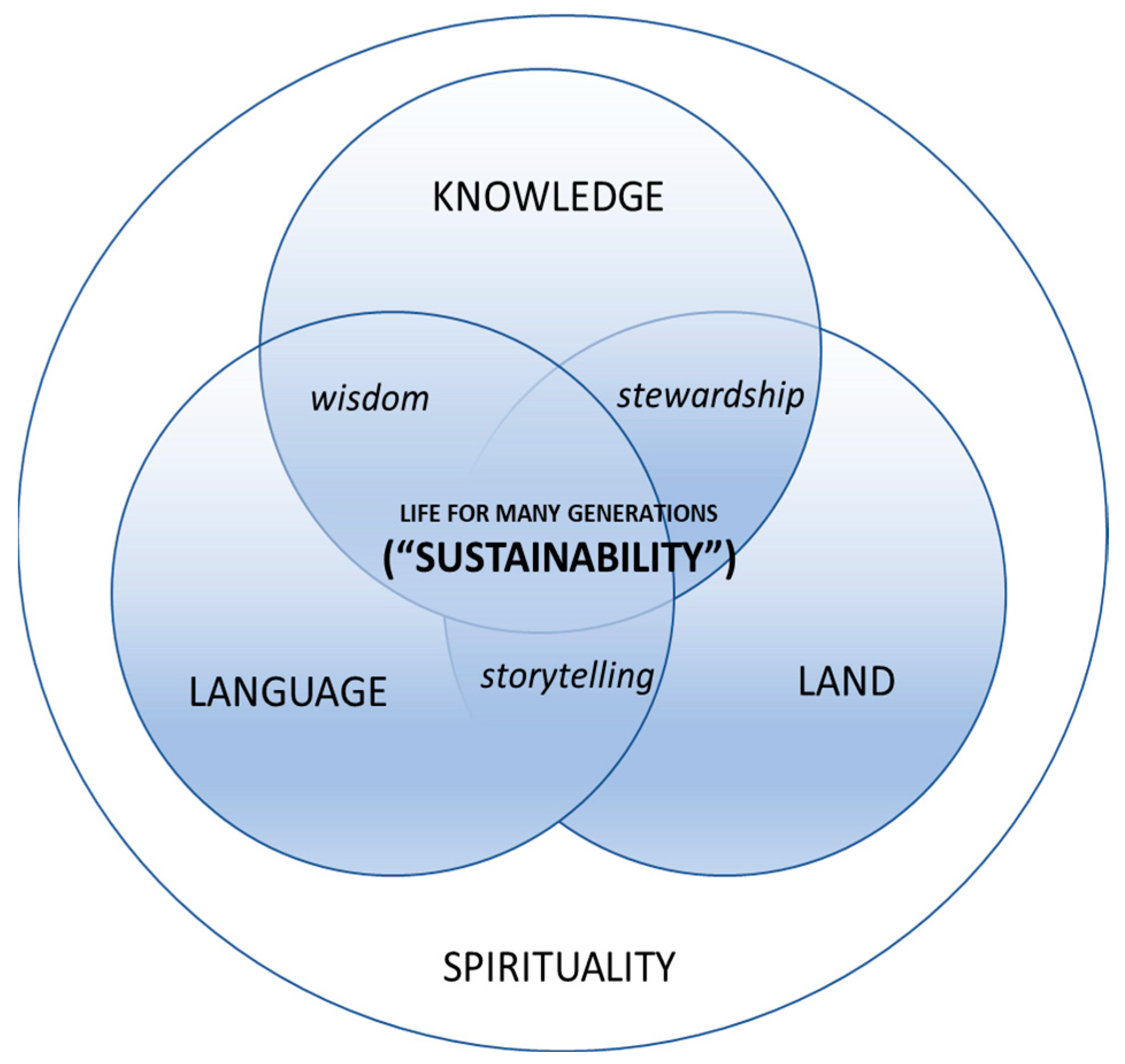
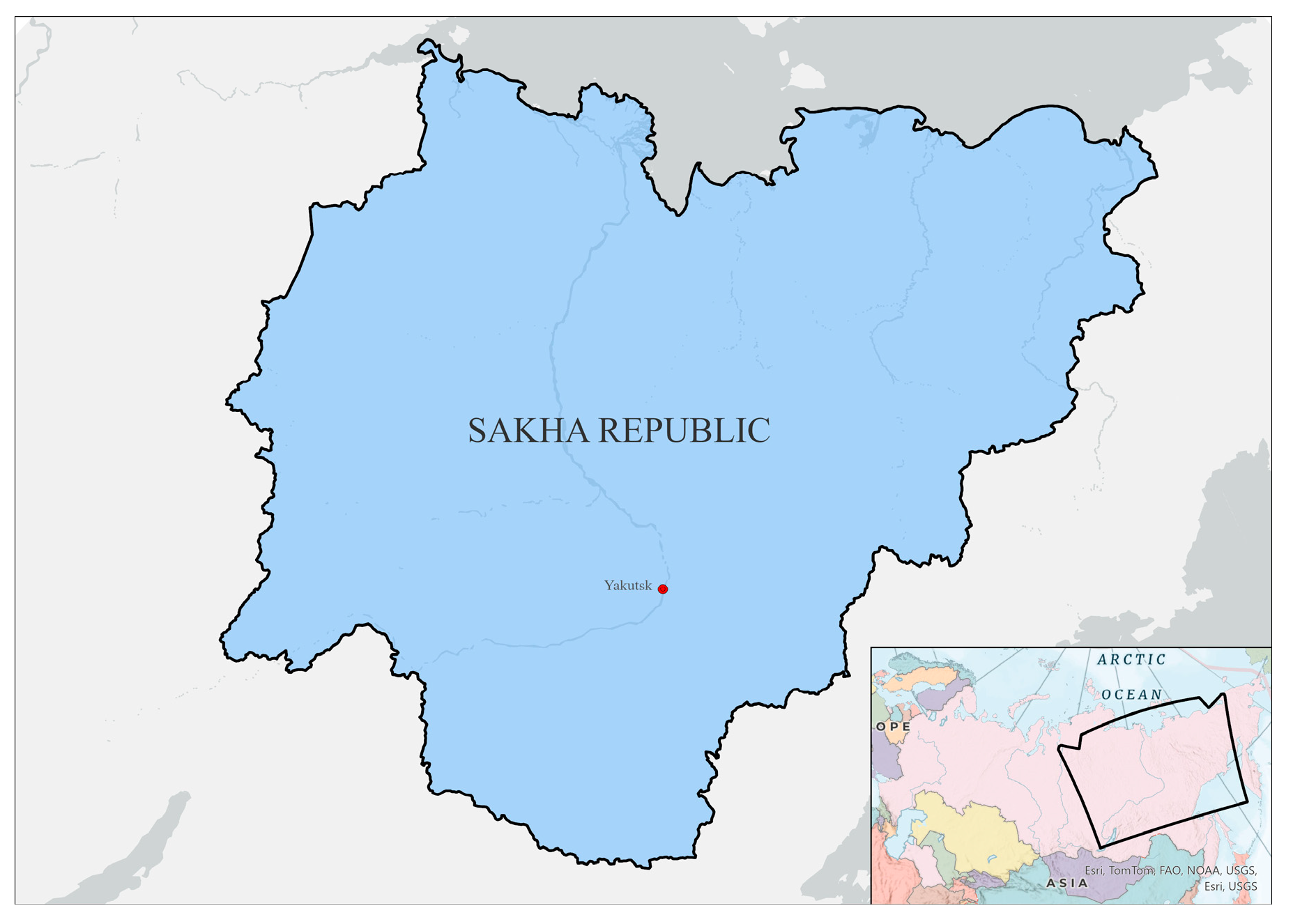
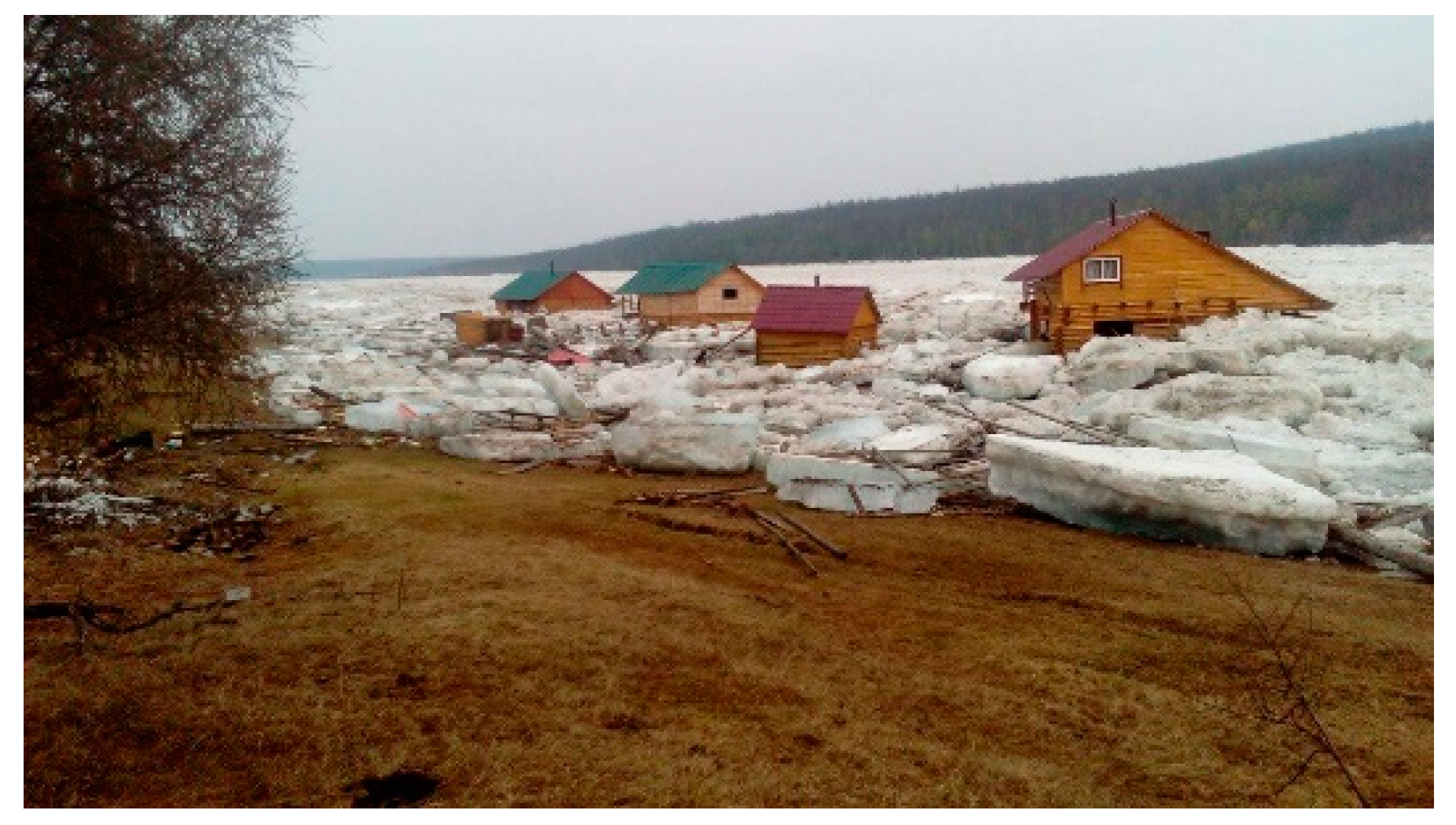
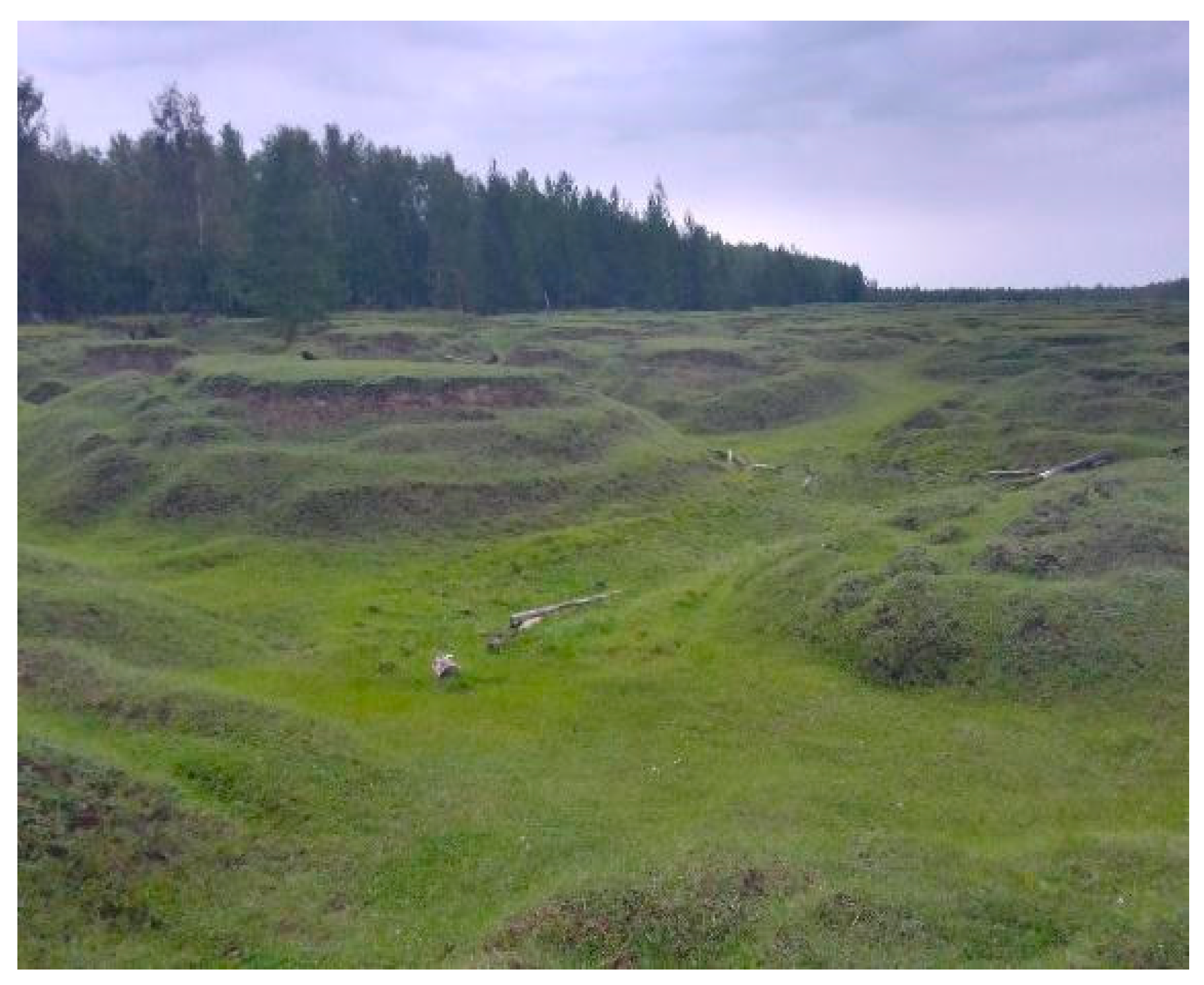
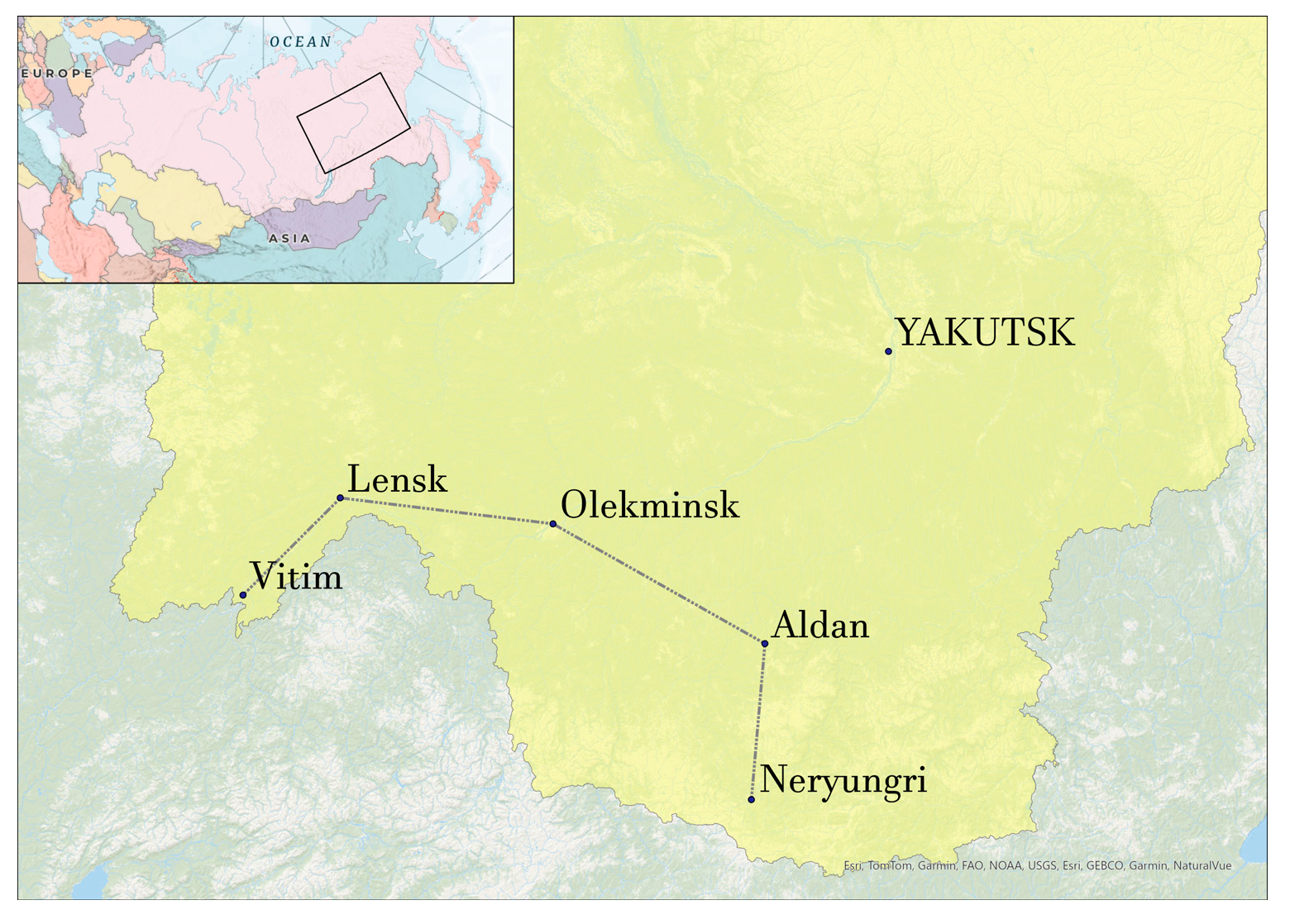
| Climate-Induced Changes | Climate Change-Related Reasons | Impacts on Indigenous Livelihoods |
|---|---|---|
| Rain-on-snow events | Warm autumn, cyclicity of wet and dry season | Foraging of reindeer and horses, horse breeding, reindeer herding |
| Forest fire | Summer temperature increase, scarce precipitation, hot dry weather, dry thunderstorm, strong winds, low humidity | Damages to residential and industrial buildings; losses of livestock and land; health issues; fodder for animal husbandry, fisheries and agriculture |
| Floods | Abundant precipitation, fluctuation of warm and cold temperatures in spring, permafrost thaw | Damages to residential and industrial buildings, roads, power and communication lines; loss of livestock and crops; destruction and damage of raw materials, fuel, food, feed, fertilizers; suspension of industrial and agricultural production |
| Water-logged hay harvesting fields | Abundant precipitation, permafrost thaw | Shortage of hay for livestock, termination of cattle and horse breeding |
| Landslides | Abundant precipitation, permafrost thaw | Damages to roads, blockage of transportation network, suspension of grocery supplies |
| Permafrost thaw | Warming, patterns of precipitation change | Damages to roads, houses and other buildings; reduction in areas for construction and agricultural usage; watering of buluus (ice cellars), grazing and hay harvesting fields; transformation of cultural landscape |
Disclaimer/Publisher’s Note: The statements, opinions and data contained in all publications are solely those of the individual author(s) and contributor(s) and not of MDPI and/or the editor(s). MDPI and/or the editor(s) disclaim responsibility for any injury to people or property resulting from any ideas, methods, instructions or products referred to in the content. |
© 2024 by the authors. Licensee MDPI, Basel, Switzerland. This article is an open access article distributed under the terms and conditions of the Creative Commons Attribution (CC BY) license (https://creativecommons.org/licenses/by/4.0/).
Share and Cite
Ksenofontov, S.S.; Petrov, A.N. Global Change Impacts on Indigenous Sustainability in Sakha Republic: A Synthesis of Knowledge. Sustainability 2024, 16, 1157. https://doi.org/10.3390/su16031157
Ksenofontov SS, Petrov AN. Global Change Impacts on Indigenous Sustainability in Sakha Republic: A Synthesis of Knowledge. Sustainability. 2024; 16(3):1157. https://doi.org/10.3390/su16031157
Chicago/Turabian StyleKsenofontov, Stanislav Saas, and Andrey N. Petrov. 2024. "Global Change Impacts on Indigenous Sustainability in Sakha Republic: A Synthesis of Knowledge" Sustainability 16, no. 3: 1157. https://doi.org/10.3390/su16031157
APA StyleKsenofontov, S. S., & Petrov, A. N. (2024). Global Change Impacts on Indigenous Sustainability in Sakha Republic: A Synthesis of Knowledge. Sustainability, 16(3), 1157. https://doi.org/10.3390/su16031157






